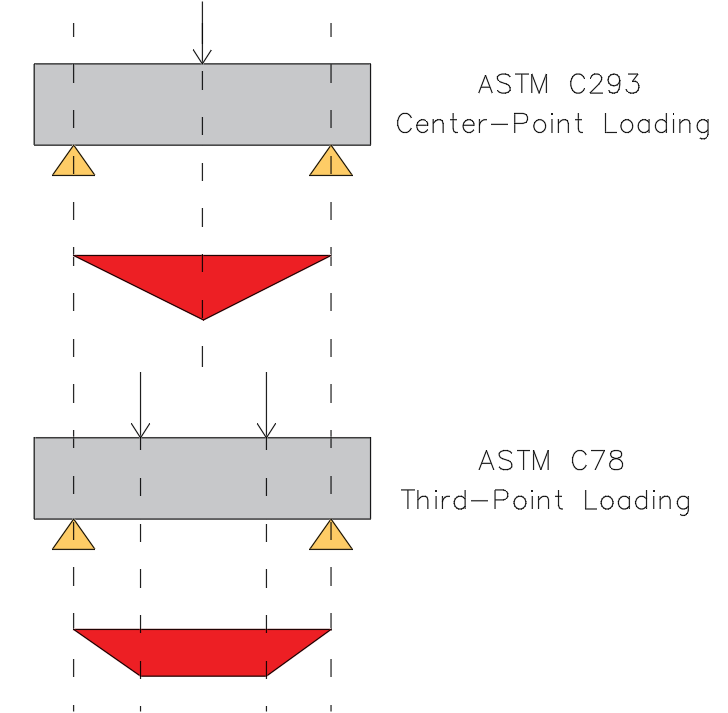Flexural Strength
Flexural strength is an indirect measure of the tensile strength of concrete. It is a measure of the maximum stress on the tension face of an unreinforced concrete beam or slab at the point of failure in bending. It is measured by loading 150 x 150-mm (or (100 x 100-mm) concrete beams with a span length at least three times the depth.
The flexural strength is expressed as Modulus of Rupture (MR) in MPa and is determined by standard test methods ASTM C78 (third-point loading) or ASTM C293 (center-point loading). The specimen size and type of loading does
impact the measured flexural strength and comparisons or requirements should be based on the same beam size and loading configuration. The MR measured by third-point loading (ASTM C78) is lower than that determined by center-point loading (ASTM C293), sometimes by as much as 15 percent. It is also observed that a lower flexural strength will
be measured with larger beam specimens.

Flexural strength is about 10 to 15 percent of compressive strength depending on the mixture proportions and type, size and volume of coarse aggregate used. For design of building members an estimate of the MR is obtained by:
where
Fr is the MR; F’c is the specified compressive strength. When MR is critical to design, the best estimate is established from laboratory tests for specific mixtures and materials used.
Uses of Flexural Strength
Design of the thickness of concrete pavements are based on the flexural strength or MR. Factors include traffic loading and subgrade stiffness. Pavement designers often require validation that the proposed mixture will achieve the MR used in design.
Flexural strength is conservatively neglected in calculating the nominal flexural strength for design of structural members. The flexural strength, estimated from the empirical relationship, is used estimate the tensile stress that causes cracking of non-reinforced concrete and to evaluate deflections at service loads.
Read Also

